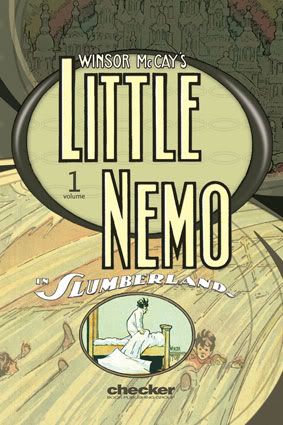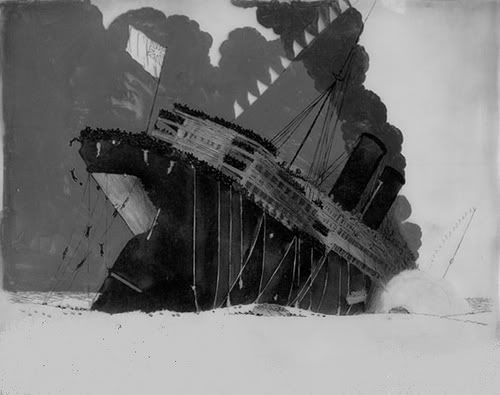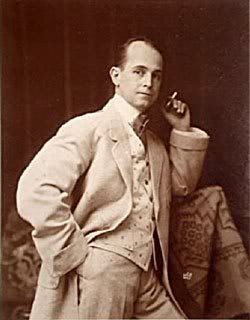 |
| FIG.2 |
Later on in 1912 MacCay produced what could probably be named as the first animated 'horror' film, featuring a vampiric mosquito which stings a man while he is asleep and is called
How a Mosquito Operates (FIG.3). After a lot of attempts the mosquito finally explodes; an indelible image in the history of animated cinema. This small creature, such as an insect is successfully presented by MacCay as disgusting monster which sucks up people's blood till it cannot finally handle any more. Such a film anticipates the development of personality or character animation through the creation of
Gertie The Dinosaur(1914).
 |
| FIG.3 |
Gertie (FIG.4) was first introduced to vaudeville audiences in 1914 and received very positive comments. Gertie is even today considered as one of the greatest animated film ever produced featuring a very personalised character and marked the beginning of cartoon individuality.MacCay gave Gertie a sweet and innocent nature, which resembled that of a child, turning a dinosaur into a pet for the first time. Gertie was playful, petulant and was interacting with the audience and was so life-like that it it could identify with her.As Leonard Maltin wrote in
Of Mice and Magic,"Winsor breathed life into an inanimate character, and this was his greatest achievement. It did not go unnoticed. Gertie was so successful that it made people forget the animated films that preceded it, even MacCay's. For years, Gertie has named in film histories as the first animated cartoon. With all its impact it might as well have been." (Beck.1994: 12)
 |
| FIG.4 |
Perhaps one of his most well-know animation was The Sinking of Lusitania, in 1918. It was a war propaganda film expressing outrage at the catastrophe and was a huge step forward in realism and drama. It was a highly very skilful piece of work which consisted of more than 25.00 drawings to complete and took two years to complete. The animation work is tremendously fluid and the tone and detail very impressive. Its mood is pretty dark as MacCay decides to depict some of the gruesome detail of aftermaths of the sinking-like drowning children. It was the film's approach to reality that made it so memorable and made the event idelible in people's minds. As Thomas mentioned:
"Set behind this notion f the documentary truth of the photographic image, MacCay's artistic reconstruction of the event seems quaint. It is subjective, artistic and aesthetic-notions far from the documentary node, indeed it's rather odd to call it a 'documentary' at all. But in this case perhaps the notion of documentary needs closer examination." (Thomas.2003:39)
 |
| FIG.5 |
In conclusion, MacCay will always be remembered as the man who turned animation into a way of art and gave character to inanimate creatures. he was basically the man who brought movement in drawings into life way before Walt Disney's breakthrough.
Bibliography
Coulton,Waugh(1947) The Comics.USA: M. Thomas Inge
Beck, Jerry(1994) The 50 Greatest Cartoons.USA: Layla Productions
Thomas Maureen and Francois Penz(2003) Architectures of Illussion.USA: Intellect Ltd






Just to let u no that u currently have the dates set at 1860 - 1834 instead of *1934 :)
ReplyDeleteoopss..just corrected it :P
ReplyDelete